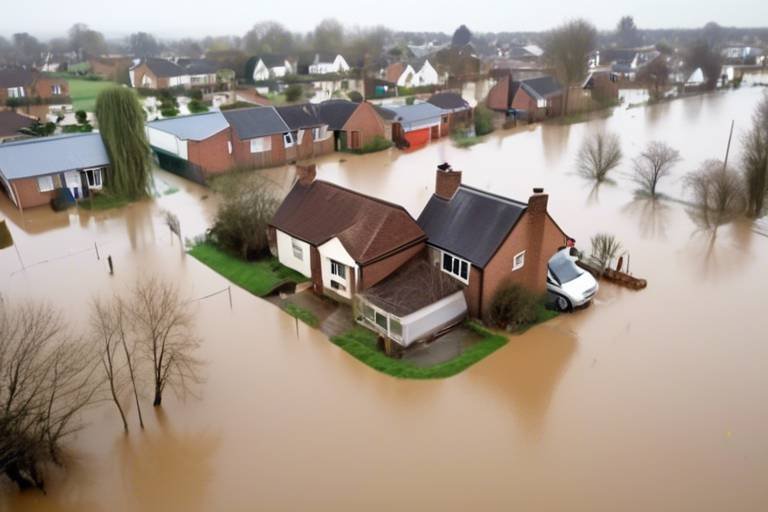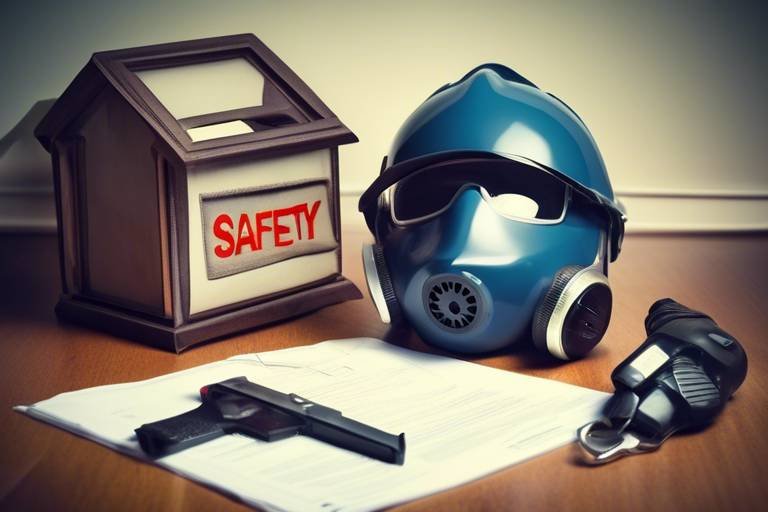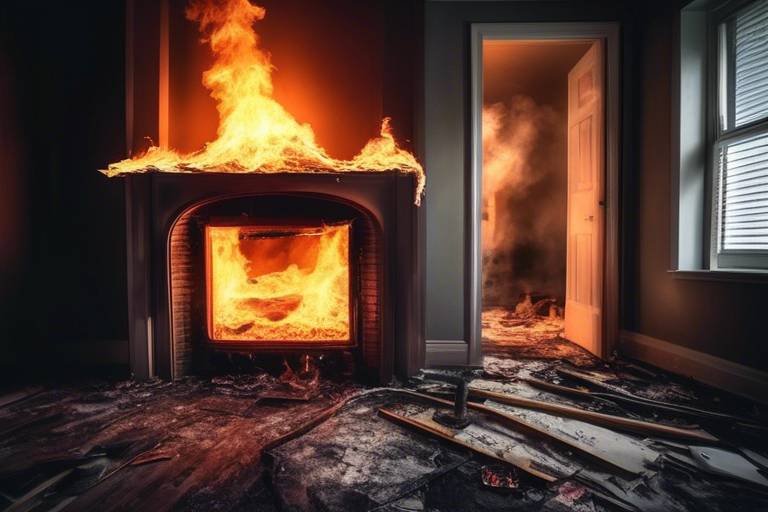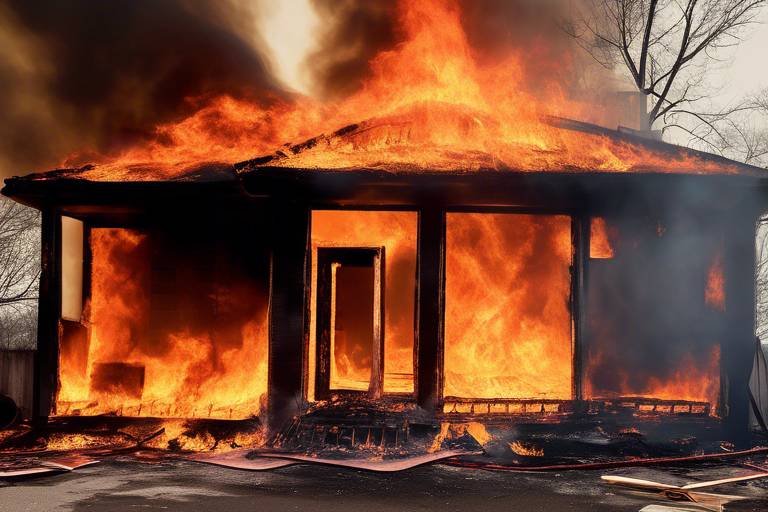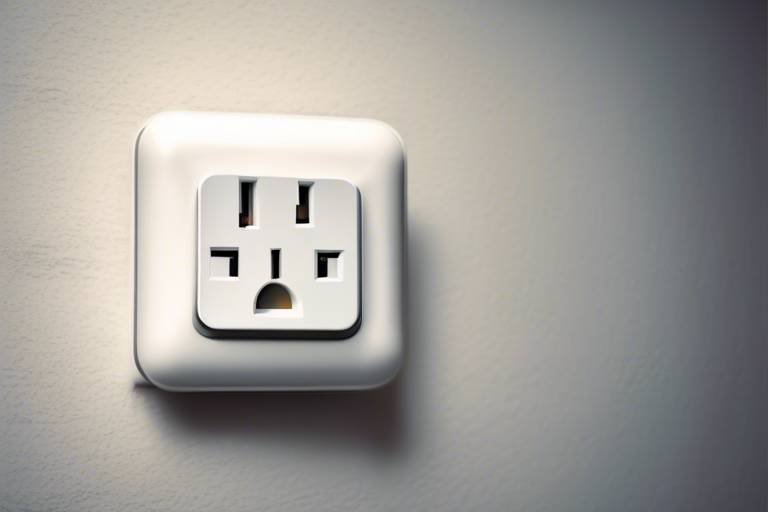How to Protect Your Home from Flooding
Flooding can feel like an unwelcome guest that shows up unexpectedly, wreaking havoc on your home and life. It's essential to understand that protecting your home from flooding isn't just about sandbags and insurance; it's about being proactive and prepared. In this article, we’ll explore a variety of strategies that can help you safeguard your home against flood damage. From understanding flood risks to implementing preventive measures and preparing for emergencies, we’ll cover everything you need to know to keep your property safe during heavy rains and natural disasters.
Recognizing the types of flooding that can affect your area is crucial. Flooding isn’t a one-size-fits-all disaster; it comes in different forms. For instance, flash floods can occur with little warning, while river floods may develop over a longer period. Coastal flooding, often exacerbated by storm surges, can also pose a significant threat to homes near the shore. Understanding these risks can help you assess your vulnerability and take the necessary steps to protect your home.
Conducting a thorough assessment of your property can identify potential weaknesses. Start by evaluating your home's location and the surrounding landscape. Is your home situated in a low-lying area? Are there nearby bodies of water that could overflow? These factors are critical in determining your flood risk. Implementing necessary preparations can significantly minimize potential damage.
Knowing your property's elevation relative to flood zones is essential. If your home sits below the base flood elevation level, you're at a higher risk. You can determine your elevation by checking local flood maps or consulting with a professional. This knowledge is your first line of defense against flooding.
Understanding flood zone designations can help homeowners make informed decisions. The Federal Emergency Management Agency (FEMA) designates flood zones based on the risk level. For example, Zone A indicates a high risk of flooding, while Zone X represents areas with a lower risk. Knowing your flood zone can influence your insurance rates and property value.
Identifying areas of your home most susceptible to flooding is vital. Common vulnerabilities include:
- Basements and crawl spaces
- Ground-level windows
- Garage doors
- Low-lying entryways
Addressing these vulnerabilities through proper sealing, elevation, and drainage can make a significant difference in your home's flood resilience.
Taking proactive steps can significantly reduce flood damage. Here are a few preventive measures you can implement:
- Landscaping Adjustments: Consider grading your yard to direct water away from your home.
- Drainage Improvements: Install French drains or rain gardens to manage excess water.
- Flood Barriers: Invest in flood barriers or levees to protect your property.
These adjustments may seem minor, but they can have a major impact when the waters rise.
Having a well-structured emergency plan is essential for flood preparedness. Your plan should include evacuation routes, a communication strategy, and a clear understanding of what to do in case of flooding. Make sure all family members are aware of the plan and practice it regularly. This way, everyone knows what to do when the floodwaters start to rise.
An emergency kit can be a lifesaver during a flood. What should you include in your kit? Here are some essential items:
- Water (at least one gallon per person per day for three days)
- Non-perishable food (enough for three days)
- Flashlight and extra batteries
- First aid kit
- Whistle to signal for help
- Local maps
Having these items on hand can make a world of difference in an emergency.
Effective communication is critical during emergencies. Establish a communication plan with family members and local authorities to stay informed during a flood crisis. Consider using text messages or social media to keep in touch, especially if phone lines are down. This ensures that everyone knows where to go and what to do.
Recovering from a flood can be challenging, but with the right guidance, you can restore your home efficiently. Start by assessing the damage and documenting it for insurance purposes. Filing insurance claims can be a daunting process, but having thorough documentation can simplify it. Once you’ve navigated the paperwork, begin the restoration process. This may involve professional help, especially if structural damage is involved. Remember, the quicker you act, the better your chances of restoring your home to its pre-flood condition.
Q: What should I do if I receive a flood warning?
A: If you receive a flood warning, take it seriously. Move to higher ground immediately and avoid walking or driving through floodwaters.
Q: How can I find out if my home is in a flood zone?
A: You can check FEMA's flood maps or contact your local planning office to find out if your home is in a flood zone.
Q: What insurance covers flood damage?
A: Standard homeowners insurance typically does not cover flood damage. You may need to purchase a separate flood insurance policy through the National Flood Insurance Program (NFIP).

Understanding Flood Risks
Flooding can be a devastating experience for homeowners, and understanding the risks involved is the first step in protecting your property. Floods can happen in many forms, each with its own set of causes and consequences. Whether you live in a coastal area, near a river, or even in a seemingly safe neighborhood, it’s crucial to recognize the types of flooding that could affect you. This knowledge empowers you to take appropriate measures to safeguard your home.
One of the most common types of flooding is flash floods. These occur suddenly, often within minutes of heavy rainfall, and can transform a dry landscape into a torrent of water in no time. Flash floods are particularly dangerous because they can happen with little or no warning, making them a significant risk for those living near steep terrain or in urban areas with poor drainage systems.
Another prevalent form is river flooding, which occurs when rivers overflow due to prolonged rainfall or melting snow. This type of flooding can develop more gradually compared to flash floods, but it can still pose a serious threat, especially for homes located near riverbanks. Homeowners in these areas should be particularly vigilant, as river flooding can lead to extensive damage over time.
Coastal flooding is another critical concern, especially for those living near oceans or large lakes. Storm surges during hurricanes or heavy storms can inundate coastal areas, leading to significant property damage and safety hazards. It's essential to stay informed about weather patterns and potential storm threats if you live in these regions.
Understanding your local flood risk is not just about recognizing these types of flooding; it also involves knowing how they can impact your specific location. Factors such as your home's elevation, drainage systems, and the proximity to bodies of water all play a role in your vulnerability. For example, homes built in low-lying areas are at a higher risk of flooding, particularly during heavy rainfall or storms.
To better comprehend your flood risk, consider the following factors:
- Local Geography: The landscape and topography of your area can influence flood patterns.
- Weather Patterns: Understanding the typical weather events in your region, including rainy seasons and storm risks.
- Historical Data: Researching past flood events can provide insights into potential future risks.
Moreover, it’s essential to be aware of how flood risks can change over time due to factors like climate change, urban development, and changes in land use. As cities expand, natural drainage systems can be altered, leading to increased flood risks even in previously unaffected areas. Therefore, staying updated on local regulations and floodplain maps is key to understanding your ongoing risk.
In conclusion, being informed about the various types of flooding and the specific risks associated with your location is imperative for effective flood preparedness. By understanding these risks, you can take proactive steps to protect your home and ensure the safety of your family.

Home Assessment and Preparation
When it comes to protecting your home from flooding, the first step is conducting a thorough home assessment. This is like putting on your detective hat and investigating your property for any potential weaknesses that could be exploited by rising waters. By understanding the risks your home faces, you can take proactive measures to mitigate damage and safeguard your family. So, where do you start? Let's dive into the essentials!
First, it's crucial to evaluate your property's elevation. This means understanding how high your home sits compared to nearby flood zones. If your house is lower than the surrounding area, it might be a prime target for floodwaters. To determine this, you can check with local floodplain maps or consult with a professional who can assess your property’s elevation accurately. Remember, even a few feet can make a significant difference when it comes to flooding!
Now, let’s break down the process of evaluating your property’s elevation. You can start by locating your home on FEMA flood maps. These maps provide valuable information on flood zones and help you understand the risks associated with your location. If you're unsure how to read these maps, consider reaching out to a local expert who can guide you through the process. Understanding your flood zone can also influence your flood insurance rates, so it’s worth the effort!
Speaking of flood zones, let’s take a moment to understand what they are. The Federal Emergency Management Agency (FEMA) designates various flood zones based on the risk of flooding. For instance, Zone A is considered a high-risk area, while Zone X is low risk. Knowing your flood zone designation is essential because it can affect your mortgage requirements and insurance premiums. If you live in a high-risk area, you might want to consider additional flood-proofing measures or even elevate your home.
Next, it’s time to identify the vulnerable areas of your home. Typically, basements and crawl spaces are the most susceptible to flooding. If your home has a basement, check for any cracks in the walls or floor that could allow water to seep in. Additionally, ensure that your gutters and downspouts are functioning properly and directing water away from your foundation. You can even consider installing a sump pump to help manage excess water during heavy rains.
Another area to focus on is the landscaping around your home. Ensure that the grading slopes away from your foundation to prevent water from pooling near your home. You might also want to consider planting native vegetation that can help absorb excess rainwater. It’s like giving your yard a job to do – keeping your home dry!
Finally, once you’ve assessed your property, it’s time to implement necessary preparations. This could involve installing flood barriers, sealing basement walls, or even elevating electrical systems and appliances. The more proactive you are, the better you can protect your home from the unpredictable nature of flooding.
In summary, conducting a comprehensive home assessment and preparation plan is vital in safeguarding your property against flooding. By evaluating your property’s elevation, understanding flood zone designations, identifying vulnerable areas, and implementing preventive measures, you can significantly reduce the risk of flood damage. Remember, taking these steps now can save you a lot of heartache and expense in the future!
- What should I do if my home is in a flood zone? If your home is in a flood zone, consider elevating your property, purchasing flood insurance, and implementing flood-proofing measures.
- How can I find out my property’s elevation? You can check FEMA flood maps or hire a professional surveyor to assess your property’s elevation accurately.
- What are the best preventive measures against flooding? Some effective measures include improving drainage systems, sealing cracks in your foundation, and installing flood barriers.

Evaluating Property Elevation
When it comes to protecting your home from flooding, one of the most crucial factors to consider is your property's elevation. Think of your home as a fortress; if it's built on a hill, it's less likely to be invaded by rising waters. But how do you determine if your home is at risk based on its height and proximity to water sources? Understanding your property's elevation in relation to flood zones can help you make informed decisions and take the necessary precautions.
To start, you’ll want to find out how high your property sits above sea level. This information is available through local government websites or by consulting with a surveyor. Most communities have established flood maps that indicate flood-prone areas, which can be a great resource. If your home is located in a flood zone, it’s essential to know whether it’s classified as a high-risk area or a low-risk area. This classification can significantly impact your insurance rates and your overall preparedness.
Another important aspect of evaluating your property elevation is understanding the surrounding landscape. If your home is near a river, lake, or ocean, the risk of flooding increases. Additionally, consider the following:
- Topography: Is your neighborhood flat, or are there hills and slopes? Homes on higher ground are generally safer.
- Drainage Systems: Are there adequate drainage systems in place? Poor drainage can lead to water pooling around your home, increasing flood risk.
- Soil Type: Some soil types absorb water better than others. Sandy soils, for example, drain well, while clay soils can retain water, leading to potential flooding.
Once you have assessed your elevation and surrounding factors, you can take proactive steps to mitigate flood risks. For instance, if your home is at a low elevation, you might consider elevating your home or installing flood barriers. These measures can be costly but are often worth the investment to protect your most valuable asset.
In conclusion, evaluating your property's elevation is a fundamental step in flood preparedness. By understanding your home's position relative to flood zones and taking the necessary precautions, you can significantly reduce the risk of flood damage. Remember, it’s always better to be proactive than reactive when it comes to protecting your home from the forces of nature.

Flood Zone Designations
Understanding is crucial for homeowners who want to protect their properties from potential flooding. The Federal Emergency Management Agency (FEMA) categorizes areas into different flood zones based on their risk levels, which can significantly impact your insurance premiums and property value. These designations help homeowners assess their vulnerability and make informed decisions regarding flood insurance and mitigation strategies.
FEMA classifies flood zones primarily into two categories: high-risk zones and low-to-moderate risk zones. High-risk zones, often labeled as Zones A and V, are areas that have a greater chance of flooding, typically experiencing a 1% or greater chance of annual flooding. In contrast, low-to-moderate risk zones, labeled as Zones B, C, and X, have a lower probability of flooding but are not entirely safe from flood events. Understanding these designations can help homeowners determine whether flood insurance is necessary.
Here’s a quick breakdown of the most common flood zone designations:
| Flood Zone | Description | Risk Level |
|---|---|---|
| Zone A | Areas with a 1% annual chance of flooding, typically without base flood elevation data. | High Risk |
| Zone V | Coastal areas with a 1% chance of flooding and additional hazards associated with storm waves. | High Risk |
| Zone B | Areas between the limits of the 100-year and 500-year flood plains. | Moderate Risk |
| Zone C | Areas of minimal flood risk, usually outside the 500-year flood plain. | Low Risk |
| Zone X | Areas determined to be outside the 100-year flood plain and have a low risk of flooding. | Low Risk |
As a homeowner, knowing your flood zone can help you take appropriate action. For instance, if you live in a high-risk zone, you may want to consider purchasing flood insurance to cover potential damages. Additionally, understanding your flood zone can guide you in making necessary improvements to your home. For example, elevating your home or installing flood vents can significantly reduce flood damage risks.
In summary, flood zone designations are more than just letters on a map; they represent your home's risk and can influence your financial decisions and safety measures. By becoming familiar with these designations, you can better prepare your home for the unexpected and ensure your peace of mind during stormy seasons.

Identifying Vulnerable Areas
When it comes to protecting your home from flooding, is like shining a flashlight in a dark room—it reveals the hidden dangers lurking around. Floodwaters can wreak havoc, and knowing where your home is most susceptible to damage is the first step in fortifying your defenses. Common vulnerable areas include basements, crawl spaces, and even your yard. Let's dive deeper into these hotspots.
Your basement is often the first place to take on water during a flood. If your home has a basement, it’s crucial to ensure that it’s properly waterproofed. This includes sealing cracks in the walls, installing sump pumps, and ensuring that your drainage systems are functioning optimally. You wouldn’t want to find your family heirlooms floating in murky water, would you?
Crawl spaces might seem insignificant, but they can also be a flood's best friend. These areas can easily collect water and create a breeding ground for mold and mildew, which is not only damaging but also detrimental to your health. If you have a crawl space, consider installing a vapor barrier to keep moisture at bay and ensure proper drainage.
Don’t forget about your yard! Believe it or not, the landscape surrounding your home plays a vital role in flood prevention. If your yard slopes toward your home, it can direct water right to your foundation. To combat this, you can implement landscaping adjustments such as:
- Creating a drainage ditch or swale to redirect water.
- Planting native vegetation that can absorb excess water.
- Installing rain gardens to manage runoff effectively.
Another often-overlooked area is your driveway and garage. If these spaces are prone to flooding, consider elevating them or installing barriers to keep water out. It’s all about creating a fortress around your home.
Finally, it’s essential to assess any entry points where water could seep in, such as doors and windows. Ensure that seals are intact and consider using flood shields or sandbags as a temporary measure during heavy rains. Remember, a little preparation can go a long way in protecting your home.
In summary, identifying vulnerable areas around your home is crucial in your flood protection strategy. By taking proactive steps to address these weaknesses, you can significantly reduce the risk of flood damage and ensure your home remains a safe haven for you and your family.
- What should I do if my basement floods?
Immediately turn off electricity and gas, evacuate if necessary, and contact emergency services for assistance. - How can I tell if my property is in a flood zone?
Check with your local zoning office or visit FEMA's website to find flood zone maps. - Are there any government programs to help with flood prevention?
Yes, many local and federal programs offer grants and assistance for flood mitigation efforts.
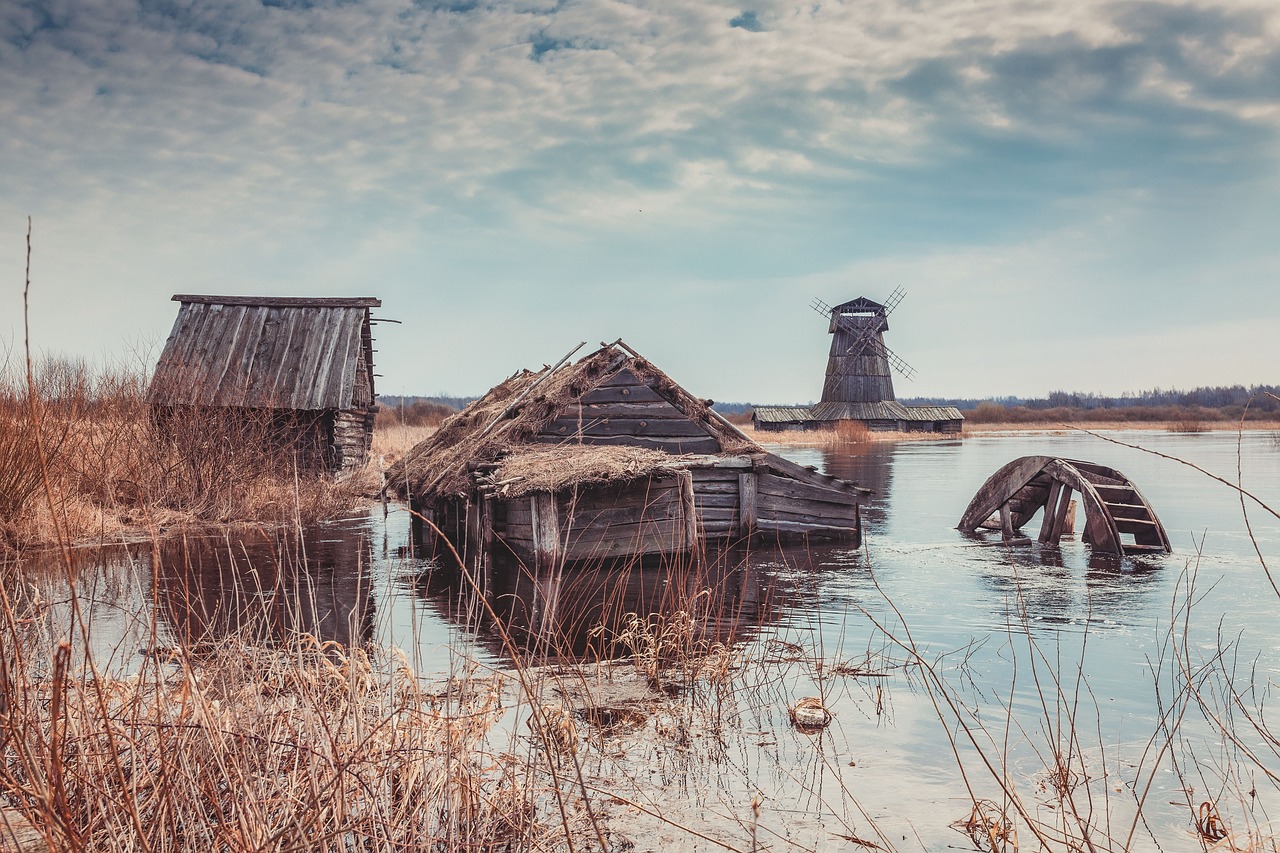
Implementing Preventive Measures
Taking proactive steps to protect your home from flooding is not just wise; it's essential. Think of your home as a fortress, and every preventive measure you take is like building a stronger wall against the unpredictable forces of nature. By implementing effective strategies, you can significantly reduce the risk of flood damage and ensure your peace of mind during heavy rains or storms.
One of the first steps you should consider is landscaping adjustments. This involves regrading your yard to direct water away from your foundation. You want to create a natural slope that encourages rainwater to flow away, rather than pooling around your home. Additionally, planting vegetation such as trees and shrubs can help absorb excess water and reduce runoff, acting as a natural sponge for your landscape.
Another critical aspect is improving your drainage system. Ensure that gutters and downspouts are clean and functioning correctly. Clogged gutters can lead to overflow, sending water cascading down the sides of your house. Make sure your downspouts extend at least six feet away from your foundation. You might even consider installing a rain barrel to collect excess rainwater, which can be reused for watering your garden.
Moreover, consider installing a sump pump in your basement or crawl space. This device can be a real game-changer during heavy rains. It actively pumps out any water that seeps in, keeping your lower levels dry and safe. If you already have a sump pump, make sure to test it regularly and have a backup power source in case of power outages during storms.
Lastly, it's crucial to seal any cracks in your foundation and walls. Water can sneak in through even the tiniest openings, so take the time to inspect your home thoroughly. Use a waterproof sealant to fill any gaps or cracks you find. This simple step can save you from extensive damage and costly repairs down the line.
In summary, implementing preventive measures is about being proactive rather than reactive. By making these adjustments to your home and landscape, you can create a safer environment that stands resilient against the threat of flooding. Remember, it’s always better to be prepared than to face the consequences of inaction.
- What are the best landscaping practices to prevent flooding?
Regrading your yard to slope away from your home, planting native vegetation, and installing rain gardens can significantly help manage excess water.
- How often should I check my gutters and drainage systems?
It's advisable to check your gutters at least twice a year, especially before the rainy season, to ensure they are clear and functioning properly.
- What should I do if my sump pump fails during a storm?
Having a battery backup for your sump pump is crucial. If it fails, you can also use a wet/dry vacuum to remove water until the pump is operational again.

Emergency Preparedness Plans
When it comes to safeguarding your home from the unpredictable nature of flooding, having a well-structured emergency preparedness plan is not just a good idea—it's essential. Imagine this: a heavy rainstorm starts, and before you know it, the water levels begin to rise. Panic can set in quickly, but if you have a plan, you can navigate through the chaos with confidence. An effective emergency plan should encompass several key components, ensuring that you and your family are ready to respond swiftly to any flood threat.
First and foremost, you need to establish a family emergency plan. This plan should outline what to do in the event of a flood, including designated meeting spots, evacuation routes, and communication strategies. Think of it as your family’s roadmap during a storm—without it, you might find yourselves lost in a sea of uncertainty. Make sure to discuss this plan with everyone in your household, so everyone knows their role when the time comes. It’s also wise to practice your plan through regular drills, which can make a world of difference in an actual emergency.
Moreover, consider creating an emergency kit that can sustain your family for at least 72 hours. This kit should include essential items that will help you weather the storm—literally. Here are some must-haves for your emergency kit:
- Water: At least one gallon per person per day.
- Non-perishable food: Think canned goods, granola bars, and dried fruits.
- Flashlight and batteries: Power outages are common during floods.
- First aid kit: Be prepared for any injuries.
- Personal documents: Keep copies of critical paperwork like insurance policies and identification.
In addition to these items, it’s crucial to think about your communication plan. During a flood, staying informed can be a matter of safety. Make sure to establish how your family will communicate if you become separated. Designate a point of contact outside your immediate area, as local phone lines can become congested. This way, you have a reliable source to check in with, reducing the anxiety of not knowing where your loved ones are.
Also, keep in mind that local authorities and emergency services will provide updates during a flood crisis. Ensure that you have access to reliable sources of information, such as weather apps, local news stations, and social media channels. Being informed enables you to make timely decisions that can protect you and your family.
Lastly, review and update your emergency plan regularly. As your family grows or changes, so should your plan. Keeping it current ensures that everyone is on the same page and ready to act when the need arises. In summary, a well-thought-out emergency preparedness plan is your best defense against the chaos that flooding can bring. By taking the time to prepare now, you can face the future with confidence, knowing that you’re ready for whatever Mother Nature throws your way.
Q: How often should I review my emergency preparedness plan?
A: It's recommended to review your plan at least once a year or whenever there are significant changes in your family dynamics, such as moving, adding new family members, or changes in contact information.
Q: What should I do if I can't evacuate during a flood?
A: If you can't evacuate, move to the highest point in your home, stay away from windows, and keep your emergency kit close. Tune in to local news for updates and wait for rescue personnel.
Q: How can I keep my children informed and calm during a flood?
A: Discuss the flood plan with your children beforehand and reassure them that you have a plan in place. During the event, keep them engaged with activities and provide clear, simple explanations about what is happening.

Creating an Emergency Kit
When it comes to preparing for a flood, one of the most crucial steps is assembling an emergency kit. Think of it as your family's lifeline during a crisis—a well-stocked kit can make all the difference when the waters rise. So, what exactly should you include in this essential collection of supplies? Let's dive into the must-haves that will ensure your family is ready for any situation.
First and foremost, you need to consider the basics. Your emergency kit should contain enough supplies to last at least 72 hours. This includes non-perishable food items, bottled water, and any necessary medications. Imagine being trapped in your home with no access to food or clean water; it’s a scenario no one wants to face. To avoid this, pack items like:
- Canned goods and dry snacks
- Water bottles or a water filtration system
- Essential medications and first-aid supplies
But that’s just the tip of the iceberg! You also need to think about communication and safety. In the chaos of a flood, staying connected is vital. Include a battery-powered or hand-crank radio to receive updates and alerts, as well as a flashlight with extra batteries. Imagine being in the dark, not knowing what’s happening outside—having a reliable source of information can provide peace of mind.
Additionally, don’t forget to pack important documents. Create copies of your family’s essential papers, such as insurance policies, identification, and medical records. Store these in a waterproof container so they remain intact even if your home gets flooded. This way, you won’t be scrambling to replace vital documents after the fact.
Lastly, consider the emotional well-being of your family. Include items that can provide comfort during stressful times, such as books, games, or even a favorite blanket. It’s the little things that can help ease anxiety when everything else feels uncertain. Remember, preparing for a flood isn’t just about the physical supplies; it’s about ensuring your family feels safe and cared for.
In summary, assembling an effective emergency kit involves more than just throwing a few items together. It’s about thoughtful planning and ensuring that you have everything you might need in a crisis. By taking the time to prepare now, you can significantly enhance your family's safety and resilience when faced with the unpredictable nature of flooding.
Q: How often should I check my emergency kit?
A: It's a good idea to review and update your emergency kit at least once a year, or whenever you experience a significant change in your family’s needs, such as a new baby or a change in medication.
Q: What should I do if I have pets?
A: Don’t forget about your furry friends! Include pet food, water, and any necessary medications in your emergency kit. Also, make sure you have a leash and a pet carrier ready, just in case you need to evacuate.
Q: Where is the best place to store my emergency kit?
A: Store your emergency kit in a cool, dry place that is easily accessible. Consider placing it in a closet near the exit of your home or in your car for quick access during an evacuation.

Establishing Communication Plans
When a flood hits, chaos can reign supreme. One moment you’re watching the rain pour, and the next, you’re faced with an urgent need to evacuate. This is why having a solid communication plan is not just a good idea; it's essential for ensuring the safety of your loved ones. Think of it as your lifeline amidst the storm. It’s about more than just knowing where to go; it’s about knowing how to stay connected when the world outside is in turmoil.
First and foremost, it’s crucial to establish a designated meeting place for your family. This should be a safe location outside of your home, ideally away from flood-prone areas. In the event of an evacuation, this meeting point serves as a beacon of hope, a place where everyone knows to go. Whether it’s a neighbor’s house on higher ground or a local community center, having a plan reduces panic and confusion.
Next, consider the importance of communication tools. In today’s digital age, we often rely on our smartphones for everything, but during a flood, cell towers can get overwhelmed or damaged. Therefore, it’s wise to have a backup plan. Establish a list of emergency contacts that includes family members, friends, and local authorities. Make sure everyone in your family knows how to reach these contacts, whether through text, social media, or even landlines if they’re still available. You might even want to set up a group chat or use a messaging app that works well in low connectivity situations.
Moreover, it’s essential to stay updated on weather alerts and emergency notifications. Encourage your family to download apps that provide real-time updates about flooding in your area. This way, you can receive alerts directly to your phone, keeping you informed about evacuation orders or changes in flood severity. Additionally, consider investing in a battery-operated weather radio. This can be a lifesaver when the power goes out and your phone’s battery is running low.
Lastly, practice makes perfect! Conduct regular drills with your family to ensure everyone knows what to do and where to go during a flood. This not only prepares you for the worst but also helps alleviate anxiety when the real situation arises. Just like a fire drill, knowing your escape routes and communication strategies can make a world of difference when you need to act fast.
In summary, establishing a robust communication plan is about creating a safety net for your family during a flood. By designating meeting places, ensuring multiple ways to communicate, staying informed, and practicing your plan, you can turn a potentially chaotic situation into a manageable one. Remember, the key to surviving a flood is not just preparation but also effective communication!
- What should I include in my emergency communication plan?
Your emergency communication plan should include a designated meeting place, a list of emergency contacts, communication tools, and a plan for staying updated on weather alerts.
- How can I ensure my family stays connected during a flood?
Establish multiple communication methods, such as a group chat, social media, and a battery-operated weather radio, to ensure connectivity even if cell service is disrupted.
- Why is practicing my emergency plan important?
Regular practice helps everyone understand their roles and reduces panic during an actual emergency, making it easier to respond quickly and effectively.

Recovery and Restoration After Flooding
Recovering from a flood can feel like an uphill battle, but with the right approach, you can restore your home and life back to normal. The first step in this journey is to assess the damage. Once the waters recede, it’s crucial to evaluate what has been affected. Look for signs of water damage, such as swollen walls, warped floors, or a musty smell. Don't forget to document everything with photos and notes; this will be invaluable when filing insurance claims. Remember, the sooner you start the recovery process, the better your chances of minimizing long-term damage.
Next, you'll want to file your insurance claims as quickly as possible. Contact your insurance provider to report the damage and inquire about the claims process. They may send an adjuster to assess the damage firsthand. It’s essential to provide them with all the documentation you've gathered, including photos and a detailed list of damaged items. This can help speed up the claims process and ensure you receive the compensation you need to begin repairs.
Once you've secured your insurance claim, the actual restoration process can begin. This typically involves several steps:
- Water Removal: Use pumps and wet vacuums to remove any standing water in your home. If the water level is significant, consider hiring a professional water removal service.
- Drying: After the water is removed, it's crucial to dry out your home thoroughly. Use fans, dehumidifiers, and open windows to promote airflow. This step is vital to prevent mold growth.
- Cleaning: Clean and disinfect all affected areas. Use a mixture of water and bleach to sanitize surfaces and items that have come into contact with floodwaters.
- Repairs: Start making necessary repairs. This may involve replacing drywall, flooring, or even larger structural components. Depending on the extent of the damage, you might need to hire professionals.
Throughout this process, it's important to stay organized. Keep all receipts and records of repairs and purchases, as these may be required for your insurance claim. Additionally, consider reaching out to local disaster relief organizations or community resources, as they can provide assistance and support during this challenging time.
Lastly, once your home is restored, take a moment to reflect on what you can do to prevent future flooding. Implementing preventive measures can save you from going through this ordeal again. Whether it’s improving drainage systems, elevating appliances, or creating barriers, being proactive can make a world of difference.
| Question | Answer |
|---|---|
| How long does it take to recover from a flood? | The recovery time can vary widely depending on the extent of the damage, but it typically takes weeks to months. |
| What should I do if my insurance claim is denied? | Review the denial letter carefully, gather additional documentation, and consider appealing the decision or seeking legal advice. |
| How can I prevent mold growth after a flood? | Ensure thorough drying of all areas, use dehumidifiers, and clean with mold-inhibiting solutions. |
| Should I hire professionals for restoration? | For extensive damage, it’s advisable to hire professionals who specialize in flood restoration to ensure safety and quality work. |
Frequently Asked Questions
- What are the main types of flooding that can affect my home?
Flooding can come in various forms, including flash floods, which occur suddenly and with little warning, river floods that happen when rivers overflow their banks, and coastal flooding caused by storm surges or high tides. Understanding these types can help you prepare better for potential risks.
- How can I assess my home's flood risk?
Start by checking your property's elevation relative to known flood zones. You can also look into local flood maps and consult with local authorities or floodplain managers to get a clearer picture of your vulnerability.
- What preventive measures can I take to protect my home from flooding?
There are several proactive steps you can take, such as improving drainage systems, landscaping your yard to direct water away from your home, and installing sump pumps in basements. These measures can significantly reduce the risk of water damage.
- What should I include in my emergency kit for flood situations?
Your emergency kit should contain essential items like bottled water, non-perishable food, first aid supplies, flashlights, batteries, and important documents. Having these items ready can make a huge difference during a flood emergency.
- How do I create an effective communication plan for my family during a flood?
Establish clear communication protocols, including designated meeting places and methods for checking in with each other. Make sure everyone knows how to reach local authorities and has access to emergency contact information.
- What steps should I take after my home has been flooded?
After a flood, assess the damage carefully and document everything for insurance purposes. Contact your insurance provider to file a claim, and start the recovery process by cleaning and restoring your home as soon as it's safe to do so.

